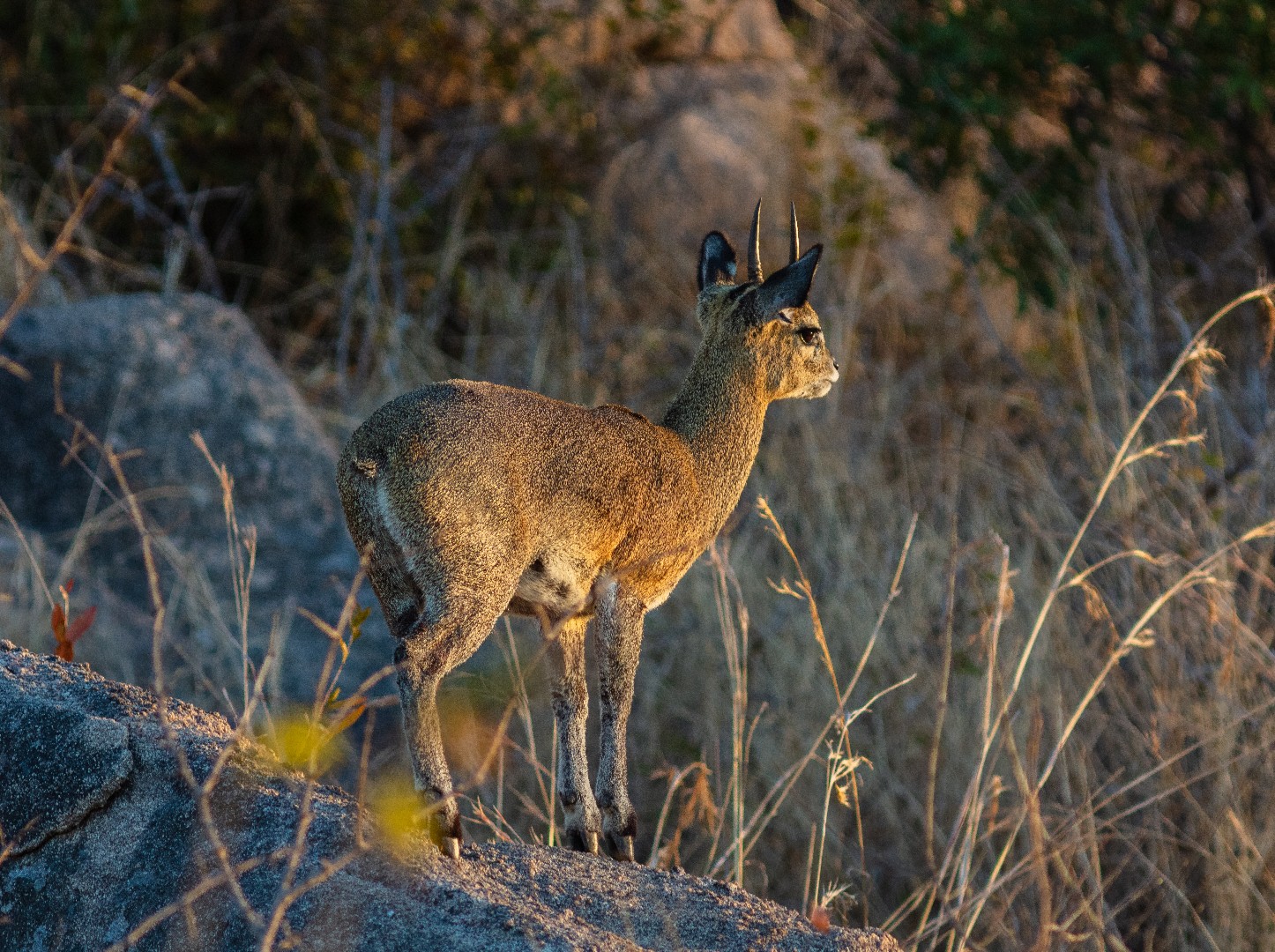Klipspringer
A species of Klipspringers Scientific name : Oreotragus oreotragus Genus : Klipspringers
Klipspringer, A species of Klipspringers
Scientific name: Oreotragus oreotragus
Genus: Klipspringers
Content
Description General Info
 Photo By Diego Delso , used under CC-BY-SA-4.0 /Cropped and compressed from original
Photo By Diego Delso , used under CC-BY-SA-4.0 /Cropped and compressed from original Description
head of female The klipspringer is a small, sturdy antelope reaching 43–60 centimetres (17–24 in) at the shoulder. The head-and-body length is typically between 75 and 115 centimetres (30 and 45 in). It weighs from 8 to 18 kilograms (18 to 40 lb). The klipspringer is sexually dimorphic; females are slightly larger and heavier than the males. The tail measures 6.5–10.5 centimetres (2.6–4.1 in). Prominent facial features include the brown forehead, short ears marked with black, prominent preorbital glands near the eyes, and white lips and chin. The horns, short and spiky, present only on males, typically measure 7.5–9 centimetres (3.0–3.5 in); the maximum recorded horn length is 15.9 centimetres (6.3 in). The coat of the klipspringer, yellowish gray to reddish brown, acts as an efficient camouflage in its rocky habitat; the underbelly is white. Unlike most other antelopes, the klipspringer has a thick and coarse coat with hollow, brittle hairs. The incisors might even get damaged by the hairs while grooming. However, the coat is a significant adaptation that saves the animal during steep falls and provides effective insulation in the extreme climates characteristic of its mountain habitat. A study showed that ticks occur in larger numbers on the underbelly, where the hair is less coarse. The hair often turns erect, especially if the animal is ill or if its temperature increases. Another feature unique to the klipspringer is its gait; it walks on the tips of its cylindrical, blunt hooves. This enhances the grip on the ground, enabling the animal to deftly climb and jump over rocky surfaces. The subspecies vary in coat colour – from golden yellow in the Cape klipspringer, Ethiopian klipspringer, golden klipspringer and Transvaal klipspringer to ochre or rufous in the Maasai klipspringer, Stevenson's klipspringer and Zambian klipspringer. Cape klipspringer populations tend to have the largest males, while Maasai klipspringer exhibit the largest females. 
General Info
Lifespan
7-11 years
Diet
Klipspringer is primarily a herbivore, often indulging in a wide range of vegetation. Particularly, it feeds on shrubs, grasses, with a notable preference for certain types of shrubs and herbs. Despite depending on vegetation, this species isn't averse occasionally consuming insects and other small invertebrates.
Appearance
Klipspringer is a small, compact mammal with short, dense fur, ranging in color from slate grey to grizzled ochre. Its distinctive long, pointed ears complement the sharp, slender snout. Adult males have tiny, sharp horns while females and young ones do not. A distinctive feature includes unique white markings on the underside, which contrast sharply with its dark body.
Behavior
Klipspringer is a predominantly solitary species, noted for its nimble high-altitude living. Despite its small size, it exhibits a robust territorial behavior, scent-marking its domain. This adaptable creature spends time foraging, balancing on hind legs to reach leaves. Unique climbing and jumping abilities allow escape from predators, maximizing survival in its rocky habitat.
Population
Stable